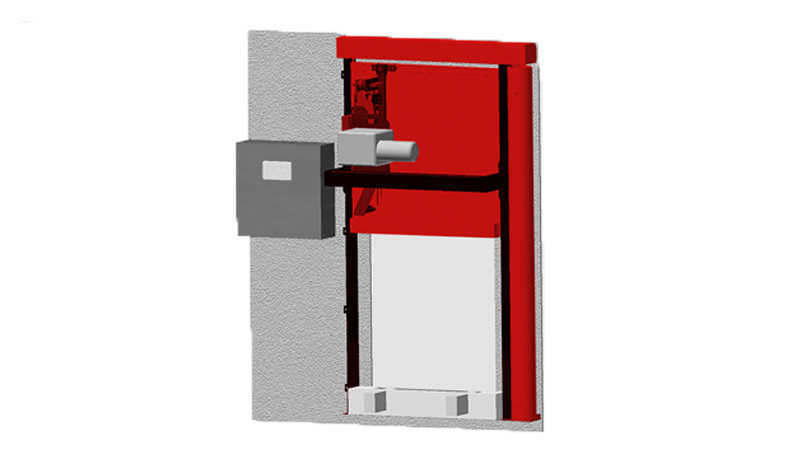SYSTEM: BR 100 (AUCH MIT SCHNELLLAUFFUNKTION)
| Bauart | Feuerschutzabschluss im Zuge bahngebundener Förderanlagen |
| Nachweis | ETA-16/0851 Europäische Technische Bewertung (BR 100 EU) | Z-6.6-2089 Allgemeine bauaufsichtlich Zulassung/allgemeine Bauartgenehmigung (BR 110 D) | VKF Technische Auskunft Nr. 32801 (BR 100 E) |
| Schließrichtung | von oben nach unten | von unten nach oben | von links nach rechts | von rechts nach links | horizontal zweiflügelig zur Mitte schließend |
| Feuerwiderstand | Bis EI2 90 | geprüft nach EN 1366-7:2004 | klassifiziert nach EN 13501-2:2007 |
| Schließzyklen | Bis C5 | 200.000 Schließzyklen | klassifiziert nach DIN EN 13501-2:2007 |
| Wiederöffnung | motorisch oder manuell |
| Fördersysteme | Gurtfördertechnik | Tragkettenfördertechnik | Rollenfördertechnik | Elektrohängebahn | Power & Free |
| Sichtbare Oberflächen des Gehäuses und der Führungsschienen | verzinkt, RAL |
Downloads
Größenabmessungen und Systemaufbau
Die Spezifikationen der einzelnen Produktausprägungen in Bezug auf Klassifizierung, Systemgröße und benötigter Wandqualität der Baureihe BR 100 ist den jeweiligen Datenblättern zu entnehmen.
Die Einbausituation muss den baurechtlichen Anforderungen des Einbaulandes entsprechen. Die Feuerwiderstandsfähigkeit einer Decken- oder Wandtragkonstruktion und der angrenzenden Bauteile muss mindestens der des Feuer- und /oder Rauchschutzabschlusses/ Feuer- und /oder Rauchschutzvorhangs entsprechen. Der Nachweis der Standsicherheit und Gebrauchstauglichkeit der angrenzenden Wände und Bauteile muss unter allgemeinen Umgebungsbedingungen und im Brandfall gegeben sein. Siehe auch Hinweise zur Norm-Tragkonstruktion in der EN1366-7:2004 beziehungsweise EN1363-1:2020. Das Brandschutzsystem darf auch im Brandfall außer dem Eigengewicht keiner zusätzlichen Belastung ausgesetzt sein.


